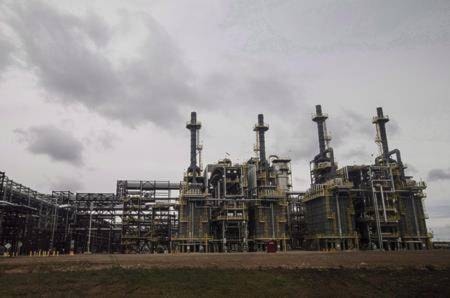Getting Alberta’s economy running on all its fossil-fuel-powered cylinders is at the heart of the province’s election campaign.
But some of Canada’s top energy thinkers — as well as international experts — warn there’s no pedal any premier can stomp to make that engine rev like it used to.
READ MORE: Advance polling stations open April 9 to 13 across Alberta
“No policy of any Alberta government can change things,” said Mark Jaccard, an energy economist at B.C.’s Simon Fraser University, who has advised governments on climate policy and helps write reports for the Intergovernmental Panel on Climate Change.
“If Albertans are unwilling to accept a steady oilsands output, with the resulting employment, I fear for them.”
The University of Manitoba’s Vaclav Smil, one of Canada’s most widely quoted energy analysts, said any move to renewable energy will take decades, not years. The transition, however, may be felt sooner.
“All energy transitions are slow,” he said. “Oil will be with us for decades to come — but not necessarily with high annual growth rates.”
The world has changed, said Andrew Grant of the London-based research group Carbon Tracker.
“Companies (are) much more reluctant to invest capital in projects that require very, very high capital outlay and take years and years to pay back. That encapsulates the oilsands.”
Grant’s group has recently published research suggesting that while renewables are still small, they play a big role in meeting new demand.
Solar and wind power provide three per cent of global energy demand, the report said. But between them they account for a quarter of all new generation.
It said that by early next decade, power from solar and wind is expected to be as cheap or cheaper than fossil fuels anywhere in the world. Since 2012, more new power generation has come from renewables than fossil fuels.
High-cost fossil fuels will become less attractive investments, Grant said. Even without carbon pricing, his group expects fossil fuel demand to peak early next decade.
“It’s not necessarily that the change to renewables will be quick,” he said. “But it’s quick enough to make up all of the growth in future energy demand fairly soon.”
The same logic applies to transportation. A tiny fraction of the world’s cars are electric, but they make up 22 per cent of growth in sales.
Jaccard has run the numbers.
In a paper published last year, he concluded that if the world honours its pledge to keep global warming under two degrees Celsius, there’s less than a five per cent chance that new oilsands investment — including pipelines — will be profitable over the next 30 years.
“When the global demand for oil stabilizes and starts to fall, Alberta will be hit first,” he said. “It’s (oilsands) among the highest emissions per barrel with the highest production costs.”
Nor is the oilpatch as job-rich as it once was.
Between 2014 and 2016, production grew by nearly 10 per cent, but 39,000 fewer people were employed. “Albertan oil output increased over the last four years while the jobs were lost,” Jaccard said.
Bob Weber, The Canadian Press
